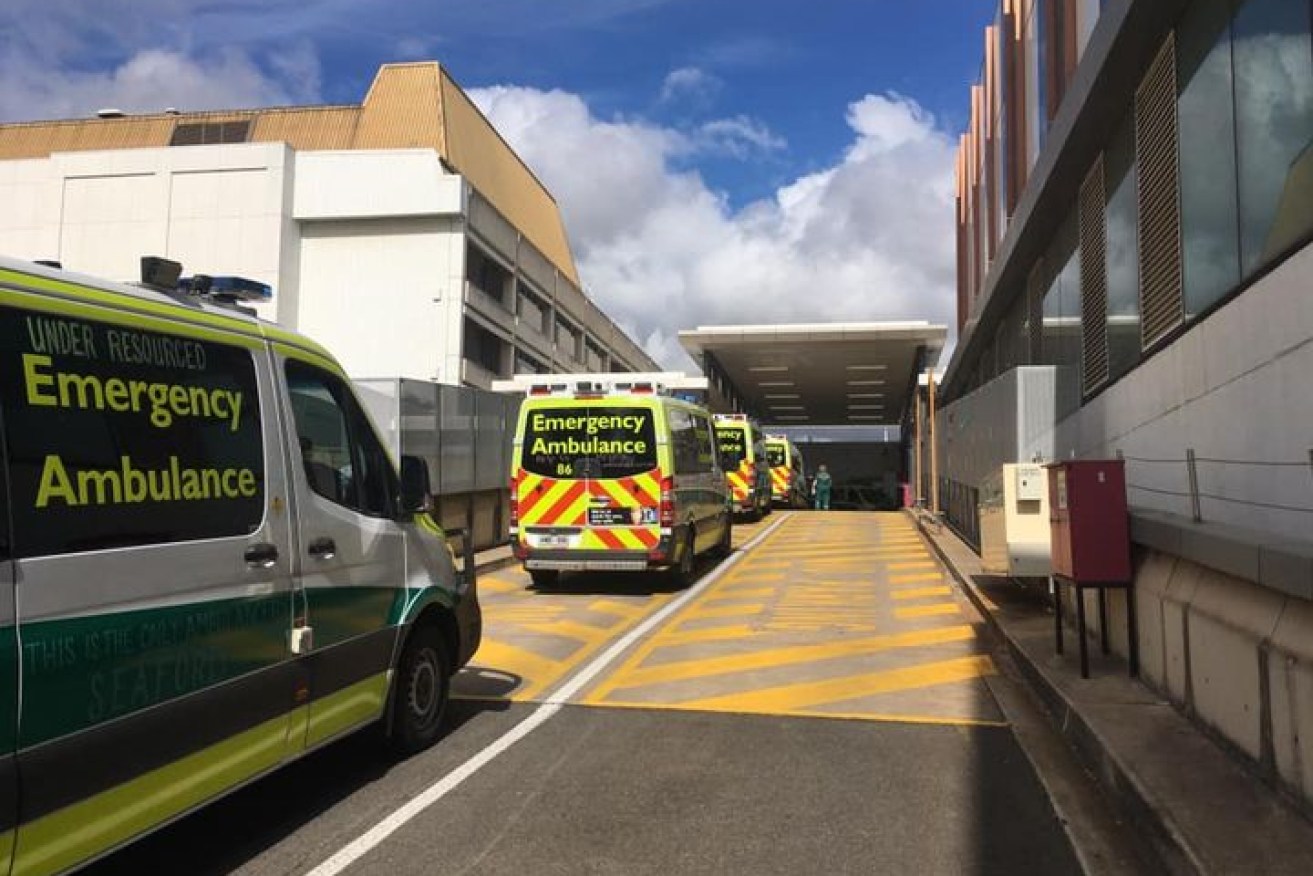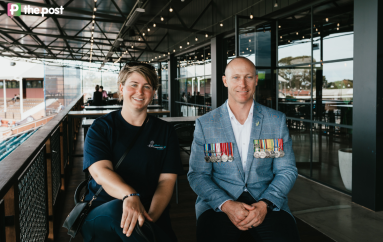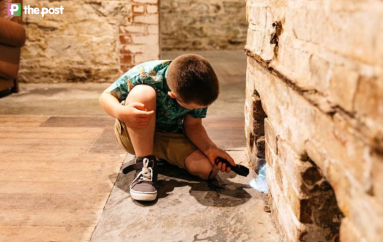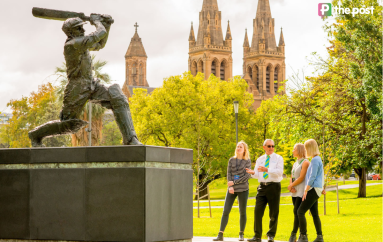10-year-old in ‘life-threatening’ emergency waited 23 minutes for ambulance
UPDATED: A 10-year-old child in a “life-threatening” emergency was forced to wait 23 minutes for an ambulance to arrive on the weekend, the paramedics’ union has revealed, as Adelaide hospitals struggled with overcrowding and ambulance ramping.


Ambulance ramping at Flinders Medical Centre last year. Photo: Ambulance Employees Association
The case has prompted calls for an immediate investigation with details emerging a day after clinicians reported “unprecedented” demand on emergency departments, with 139 patients waiting to be seen across the system at its peak.
The nurses’ union has told InDaily that hospital EDs were still experiencing extreme demand today, with 20 mental health patients waiting for a bed at the Royal Adelaide Hospital late this morning, including one patient who’d been waiting for more than four days.
Ambulance Employees Association state secretary Phil Palmer this morning said the 10-year-old child on the weekend was one of three “Priority One” cases that paramedics had delays reaching on Sunday during hospital logjams and ramping.
Palmer said a triple zero call was made for the child at Woodforde in the Adelaide foothills at 11.03am.
The child was triaged as Priority One, meaning “immediate threat to life”, requiring an ambulance within eight minutes.
Palmer said “the service had no ambulances at the time” so a single responding paramedic was sent, arriving at 11.15am – 12 minutes later.
He said it wasn’t until 11.26am – 23 minutes after the triple zero call – that an ambulance finally arrived.
“It’s terrible when anyone is caught up in it but someone so young… it’s an unmitigated disgrace,” Palmer told InDaily.
“It’s a very sad state. Any of us who’ve got children or grandchildren it hits in the heart.”
The union says it has no other details about the patient – or the child’s current condition” – and “respects the family’s privacy at this time”.
InDaily has asked SA Health for an update on the child’s condition but SA Health says it can’t give details on individual cases.
Palmer said “Priority One is life-threatening – usually unconscious, a cardiac arrest, very serious situations where minutes and seconds are vital”.
He said a Campbelltown crew was dispatched to the child but those paramedics were “covered in blood from a previous case” so they got called off and a crew from Oakden was sent instead.
Palmer said the child was one of three Priority One cases at the time that the ambulance service was “struggling to cover”.
“We’ve been warning about this, the dangers, and this is not the first time that people’s lives have been put at risk because of ambulance shortages and because of ramping,” he said.
The union has also revealed details of a priority two case yesterday, in which an ambulance was called to attend an 11-year-old child “with an uncontrolled haemorrhage” – but it took 34 minutes to respond as there was no unit available at the time.
The benchmark for responding to such a case is 16 minutes.
Monday morning 11yo with an uncontrolled haemorrhage.
Priority 2 Lights and sirens emergency response.
No ambulance available at the time of the triple zero call.
It took 34 minutes for an ambulance to arrive.
South Australians deserve better. #saparli— Ambulance Employees Association (SA) (@aeasa1981) May 4, 2021
Opposition health spokesman Chris Picton has called for an “immediate” investigation.
“This latest case of a 10-year-old having to wait an unacceptably long time for an ambulance I think will be shocking to all South Australians,” he said.
“These are not just numbers, these are people.
“We are hearing every day about he awful situations in which people are waiting for ambulances that don’t come.
“This is why having masses of ambulances banked outside of emergency departments not only causes harm to the people waiting to get into hospital but harm for the next people who are waiting to get an ambulance call-out.”
Palmer said that as the crisis deepened yesterday, every hospital ED was on “Code White” – over capacity – except Flinders Medical Centre, which was even worse on “Code Yellow”, representing an “internal disaster”.
“Code Yellow might be for an equipment failure, say the water failed or electricity, but in this case it was Code Yellow because they had far too many high acuity patients coming in and they knew they couldn’t deal with them,” Palmer said.
“Which means in effect that someone could come in with a life threatening situation to the Flinders Medical Centre and they won’t be able to get into ED because they’ can’t get in.
“It’s a very dangerous and risky situation.
“We also heard the Royal Adelaide should have been called Code Yellow but didn’t. You can speculate about that but I would say there’s more concern about reputation than fixing the situation.”
Dr Mark Morphett, an ED doctor at FMC and the chair of the Australasian College for Emergency Medicine, confirmed Code Yellows were called in cases of “internal disaster.”
“In this case that includes the inability of patients to be seen safely in the emergency department,” he said.
Morphett said it was a “new phenomena” that Code Yellows were being called for ED overcrowding.
“I can’t remember, prior to 18 months ago, it ever being called in ED for patient number reasons,” he said.
“It was called when we had major power outages or something like that. Over the last 18 months we’ve seen an increased frequency of the need to call Code Yellow because of acute patient safety concerns.
“What we’re seeing is the gradual worsening of an already bad situation.”
Morphett said Code Yellows were now being called “frequently” because of ED overcrowding – nearly once a week at the FMC.
He said data showed that overcrowded EDs led to “increased mortality”.
He said the case of the 10-year-old waiting 23 minutes for an ambulance “shows the seriousness of the problem” facing the system.
“It represents the ongoing deterioration of the situation,” he said.
“If we aren’t meeting ambulance time frames for our sickest patients then there is grave risk.”
The nurses’ union said hospitals were still experiencing extremely high levels of demand today.
The union said that at 8am, 111 people were waiting for a bed across metropolitan emergency departments.
It said that at 11.20am today at the RAH, there were 20 people waiting for a mental health bed, including one person who had been waiting for 102 hours and others more than 90 hours.
Australian Nursing and Midwifery Federation state secretary Elizabeth Dabars said “the sad reality is that emergency departments running beyond their capacity levels is becoming a routine way our public health system is operating now”.
“These figures are frightening, and our workforce and community are being putting at risk,” Dabars said.
“The wait times we are seeing, especially for mental health beds, is just disgraceful.
“We are now measuring wait times in days, not hours. These are people requiring appropriate care and they are being forced to endure wait times of more than four days.
“The Marshall Government should feel ashamed of this situation and act immediately.”
In a statement a spokesperson for SA Health said “the health system often sees surges in activity and we have put a range of measures in place today to ease the load and rebalance demand”.
“These measures include working with peri-urban hospitals to repatriate appropriate patients to their home hospital, adding extra clinical support to increase transfers to our community care services, and purchasing additional capacity in private hospitals,” the spokesperson said.
“While work to restabilise the system will continue to be a focus over the coming days, this is not a situation unique to South Australia as increasing demand with high acuity presentations is seen across the country.
“We thank all of our hardworking staff for their ongoing commitment to providing the best care to our patients at this time.”
Health Minister Stephen Wade told State Parliament this afternoon that the 10-year-old on Sunday had experienced a “medical episode” in a conservation park.
He defended the time it took for an ambulance to arrive, explaining that the initial “solo” paramedic would have played a “key role”.
“Any suggestion that the patient waited over 20 minutes for an ambulance response is simply incorrect,” he said.
“Any claim that the ambulance service didn’t have an ambulance to cover is incorrect.”
Wade said an ambulance and solo extended care paramedic were “immediately dispatched”.
“The paramedic arrived, I am advised, with the patient in a difficult location in the conservation park, within 10 minutes of the (triple zero) call,” he said.
“Extended care paramedics are highly-trained paramedics who have a key role in delivering life-saving treatment.
“Solo paramedic response models are used around the world and the approach is extremely effective.”
The Minister told parliament he was unaware of yesterday’s “haemorrhaging” case involving an 11-year-old.




